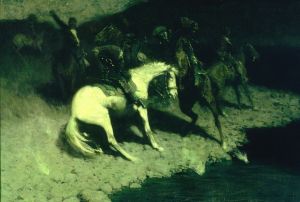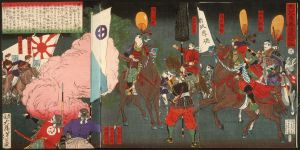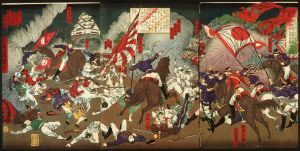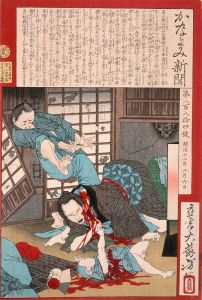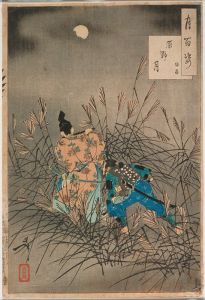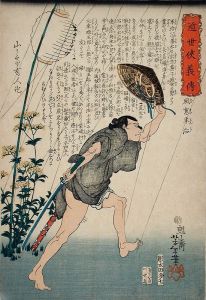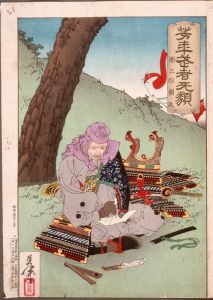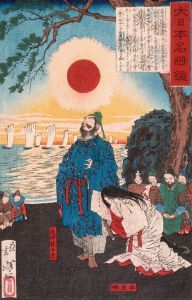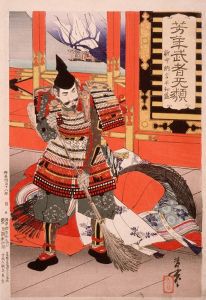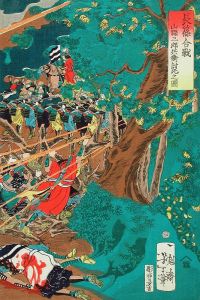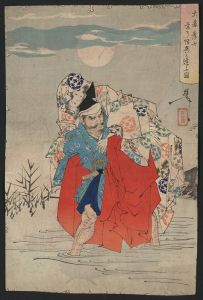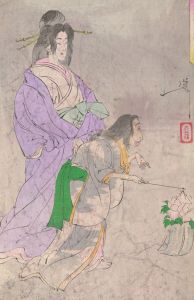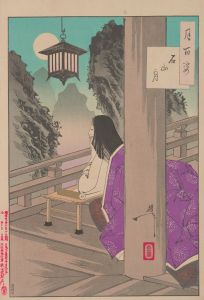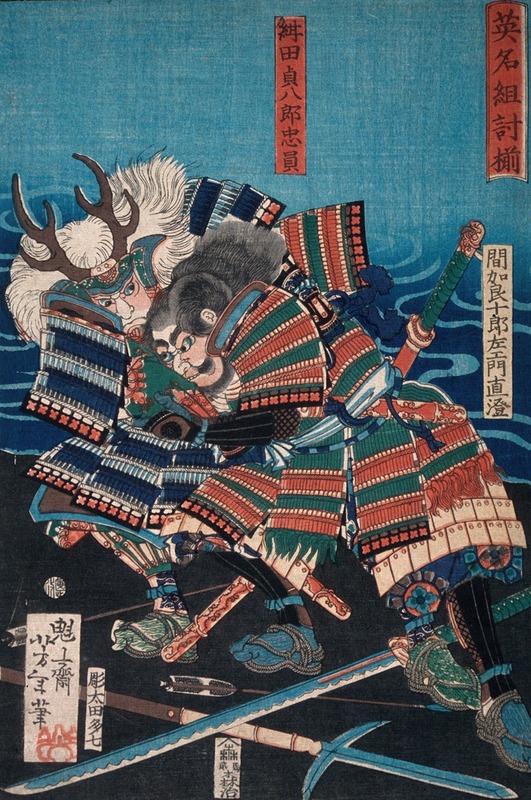
Konda Teihachirō Tadakazu and Makara Jūrōzaemon Naozumi Grappling by the Water
A hand-painted replica of Tsukioka Yoshitoshi’s masterpiece Konda Teihachirō Tadakazu and Makara Jūrōzaemon Naozumi Grappling by the Water, meticulously crafted by professional artists to capture the true essence of the original. Each piece is created with museum-quality canvas and rare mineral pigments, carefully painted by experienced artists with delicate brushstrokes and rich, layered colors to perfectly recreate the texture of the original artwork. Unlike machine-printed reproductions, this hand-painted version brings the painting to life, infused with the artist’s emotions and skill in every stroke. Whether for personal collection or home decoration, it instantly elevates the artistic atmosphere of any space.
"Konda Teihachirō Tadakazu and Makara Jūrōzaemon Naozumi Grappling by the Water" is a woodblock print created by the renowned Japanese artist Tsukioka Yoshitoshi. Yoshitoshi, who lived from 1839 to 1892, is celebrated for his innovative and dynamic approach to ukiyo-e, a genre of Japanese art that flourished from the 17th through the 19th centuries. His works often depict historical scenes, folklore, and kabuki theater, characterized by dramatic compositions and vivid imagery.
This particular print is part of Yoshitoshi's series "New Forms of Thirty-Six Ghosts" (Shinkei Sanjūrokkaisen), which was published between 1889 and 1892. The series is known for its exploration of supernatural themes, drawing inspiration from Japanese legends, ghost stories, and historical events. Yoshitoshi's fascination with the supernatural and the macabre is evident in this series, where he combines traditional Japanese aesthetics with a modern sensibility.
In "Konda Teihachirō Tadakazu and Makara Jūrōzaemon Naozumi Grappling by the Water," Yoshitoshi illustrates a dramatic encounter between two historical figures. The scene captures the intensity and physicality of their struggle, set against a backdrop of water, which adds a dynamic element to the composition. The use of water in the scene not only enhances the visual impact but also symbolizes the fluid and unpredictable nature of combat.
Yoshitoshi's mastery of the woodblock printing technique is evident in the intricate details and vibrant colors of the print. His ability to convey movement and emotion through the careful arrangement of lines and colors is a testament to his skill as an artist. The print reflects Yoshitoshi's deep understanding of human expression and his ability to capture the essence of a moment.
The historical context of the figures depicted in the print is rooted in Japanese history and folklore. Konda Teihachirō Tadakazu and Makara Jūrōzaemon Naozumi are likely drawn from historical or legendary sources, as Yoshitoshi often incorporated such figures into his works. However, specific details about their identities and the exact nature of their encounter may not be well-documented, as Yoshitoshi's works often blend historical fact with artistic interpretation.
Yoshitoshi's "New Forms of Thirty-Six Ghosts" series, including this print, represents a significant contribution to the ukiyo-e tradition, marking a transition from the Edo period to the Meiji era. His work reflects the changing cultural landscape of Japan during this time, as the country opened up to Western influences while maintaining its rich artistic heritage.
Overall, "Konda Teihachirō Tadakazu and Makara Jūrōzaemon Naozumi Grappling by the Water" exemplifies Yoshitoshi's unique artistic vision and his ability to bring historical and supernatural themes to life through the medium of woodblock printing. The print remains a valuable piece of art that continues to be studied and appreciated for its historical significance and artistic merit.





